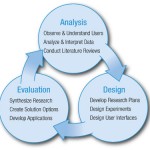 Our systems engineering services ensure that information systems and telecommunications networks are designed to capitalize on agency architectures and IT standards, to provide interoperability with other systems and networks, to be reliable and maintainable, and to make the most cost-effective use of commercial off-the-shelf (COTS) technology and agency-wide and government-wide resources.
Our systems engineering services ensure that information systems and telecommunications networks are designed to capitalize on agency architectures and IT standards, to provide interoperability with other systems and networks, to be reliable and maintainable, and to make the most cost-effective use of commercial off-the-shelf (COTS) technology and agency-wide and government-wide resources.
Telecommunications Network Analysis and Design – Applying automated tools to capture voice, data, video, and/or wireless network requirements, model network demand and load, and compare design alternatives on the basis of price and performance.
COTS Product Evaluation and Selection – Applying a structured methodology to identifying, evaluating, and selecting COTS hardware, software, and services (e.g., telecommunications services, Internet access services, software maintenance) to meet specific requirements; when warranted, adjusting the methodology, including prototypes and pilots, to address risk.
Systems Integration – Determining, testing, and exercising the appropriate configurations of two or more hardware or software components of information systems or telecommunications networks to deliver stated levels of performance, interoperability, and maintenance support within the known constraints of an agency’s IT infrastructure.
Information System Design – Translating user requirements into a system architecture and system components capable of delivering required levels of performance; instantiating the system design as a document or prototype upon which full-scale development can be based with minimal risk.
Software Development – Translating the system design into testable, maintainable software modules that meet user and design requirements; applying iterative approaches to facilitate staged testing, implementation, and deployment; applying CASE tools-such as IEF, Oracle CASE, ADW/Key-and employing prototype techniques.
System Re-engineering and Migration – Employing automated tools and reverse-forward engineering techniques, including software conversion, to transition existing systems to new platforms and/or architectures.
Testing and Evaluation – Applying automated and manual tools including “black box” and “white box” testing, to test and evaluate systems and networks under development.